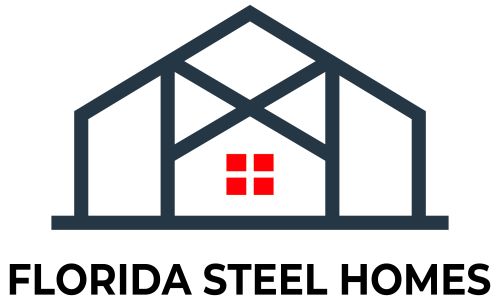Fortify Your Florida Coastal Home with Hurricane Proofing Upgrades
Living on Florida’s beautiful coastline comes with breathtaking sunrises and the constant reality of hurricane season. While you can’t control the storms, you can control how well your home withstands them. Homes built to withstand 175 mph sustained winds, heavy rain, flooding and power outages are no longer just dreams—they’re becoming necessities for responsible coastal homeownership.

Contents
Structural Reinforcement: The Foundation of Protection
The most critical hurricane-proofing upgrades begin with your home’s structural elements. Roof-to-foundation connections create a continuous load path that prevents uplift during high winds. Hurricane straps, clips, and ties should connect every major structural component, creating a unified system that moves together rather than apart during storms.
Window and door openings represent the most vulnerable points in your home’s envelope. Impact-resistant windows and doors don’t just prevent flying debris from entering—they maintain the structural integrity of your home’s pressure envelope. When one window fails, it can lead to catastrophic roof failure due to internal pressurization.
Garage doors deserve special attention, as they represent the largest opening in most homes. Reinforced garage doors or retrofitted bracing systems prevent failure that could compromise your entire structure. Many homeowners overlook this critical upgrade, focusing on windows while leaving their garage door as a weak link.
Roof Systems: Your First Line of Defense
Your roof bears the brunt of hurricane forces, making roof upgrades among the most important investments you can make. Metal roofing systems offer superior wind resistance compared to traditional shingles, with properly installed metal roofs rated for winds exceeding 140 mph.
Roof sheathing upgrades from standard OSB to structural plywood or engineered panels provide additional strength. The sheathing attachment pattern matters as much as the material—closer nail spacing and ring-shank nails create connections that resist uplift forces more effectively.
Roof edge protection through enhanced drip edges and fascia systems prevents water infiltration and wind-driven rain from compromising your home’s envelope. These seemingly minor details can mean the difference between minor repairs and major reconstruction after a storm.
Advanced Envelope Protection
Building envelope protection goes beyond just windows and doors. Properly sealed and reinforced exterior walls prevent water intrusion that can lead to mold, structural damage, and indoor air quality problems long after the storm passes.
Vapor barriers and moisture management systems designed for hurricane conditions help your home dry out quickly after storm passage. Quick drying prevents the secondary damage that often proves more costly than the initial storm damage.
Exterior wall reinforcement through additional sheathing or structural panels can significantly improve your home’s wind resistance. These upgrades work in conjunction with proper framing to create a robust shell that protects your interior.
Electrical and Mechanical System Protection
Hurricane-proofing isn’t just about structural elements—your home’s systems need protection too. Elevated electrical panels prevent flood damage that could leave you without power for extended periods. GFCI protection throughout the home provides safety during cleanup operations when water and electricity often mix.
Generator preparation includes proper transfer switches and fuel storage systems that comply with local codes. Whole-house generators provide comfort and safety during extended outages, but they must be properly installed and maintained to function when needed most.
HVAC system protection through elevated equipment and reinforced ductwork prevents damage that could compromise your home’s comfort systems. Properly sealed ductwork also prevents pressurization issues that can worsen storm damage.
Water Management and Drainage
Effective water management begins with proper grading around your home. Water should flow away from your foundation in all directions, preventing pooling that can lead to flooding or foundation problems. French drains and other subsurface drainage systems help manage groundwater during heavy rainfall events.
Sump pump systems provide additional protection against flooding, especially in areas prone to storm surge. Battery backup systems ensure these pumps continue operating even during power outages when they’re needed most.
Exterior drainage systems including gutters, downspouts, and splash blocks should be sized for extreme rainfall events. Standard residential drainage systems often prove inadequate during hurricane conditions, leading to water damage that could have been prevented.
Smart Technology Integration
Modern hurricane-proofing includes smart technology that provides early warning and remote monitoring capabilities. Weather monitoring systems provide hyperlocal conditions that help you make informed evacuation decisions.
Remote monitoring systems allow you to check on your home’s condition even when you’re evacuated. These systems can alert you to power outages, water intrusion, or other problems that require immediate attention.
Automated systems can close storm shutters, shut off utilities, and secure your home with minimal human intervention. These technologies provide peace of mind and practical protection when you’re not able to be physically present.
The Investment in Peace of Mind
Hurricane-proofing upgrades represent more than just home improvements—they’re investments in your family’s safety and your financial security. The cost of comprehensive upgrades is often less than the deductible on a major storm damage claim.
Insurance companies increasingly recognize and reward hurricane-resistant improvements through premium discounts. These savings compound over time, often paying for the upgrades over the home’s lifetime.
Most importantly, these upgrades provide the peace of mind that comes from knowing your home can protect your family when storms threaten. That security is invaluable for families choosing to live in Florida’s beautiful but vulnerable coastal communities.

